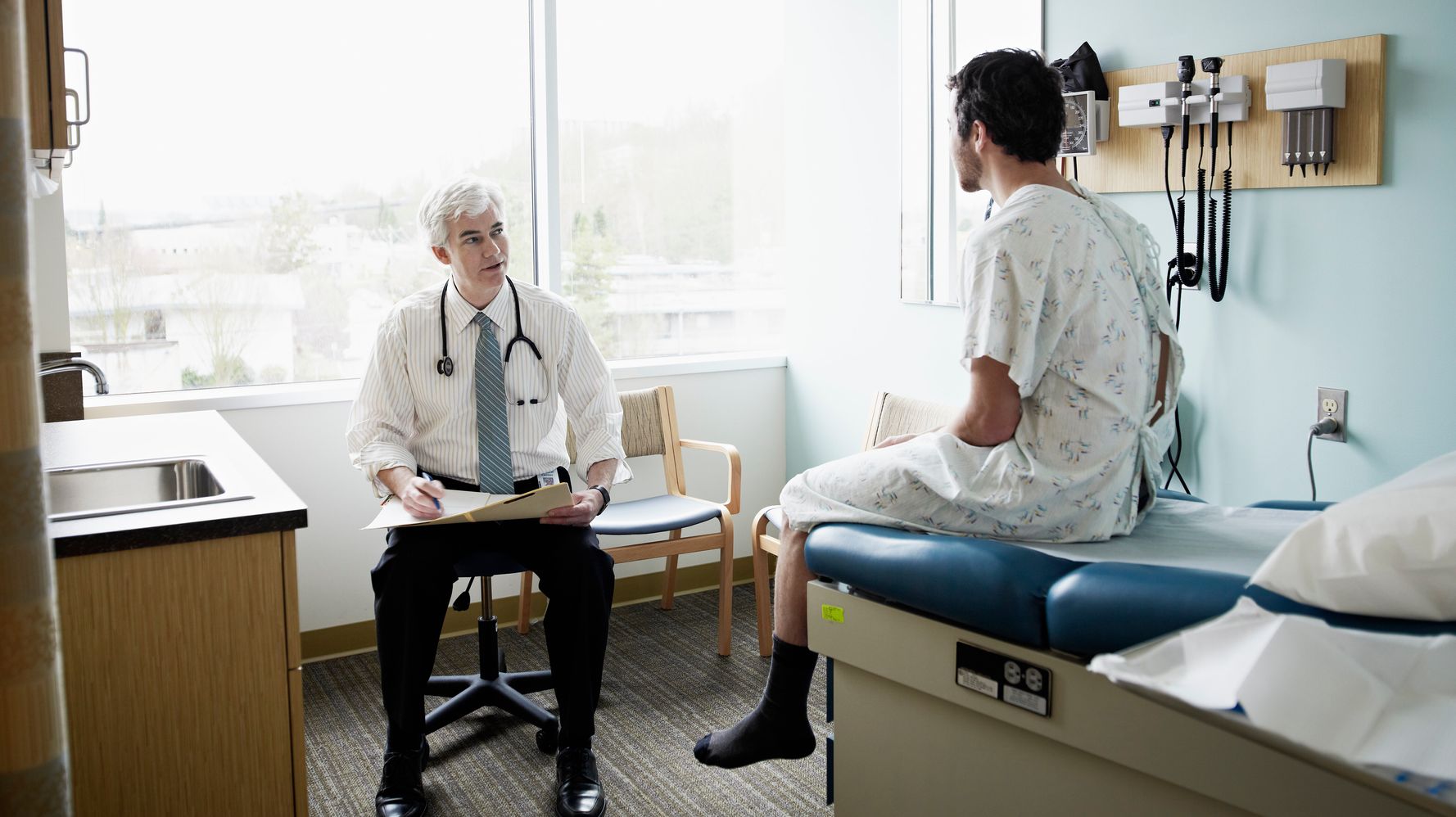Testicular cancer isn’t an anomaly. It’s the most diagnosed cancer in men ages 30 to 39, with the average age of detection around 33.
“About 1 in 250 men develop testis cancer every year, which leads to about 9,990 new cases in the United States each year,” explained Dr. Christopher Sweeney, a medical oncologist at Dana-Farber Cancer Institute and a global cancer advisory committee member for Movember.
Testicular cancer is highly treatable when diagnosed before reaching advanced stages, and like most cancers, early detection is key in helping to combat it. That’s why physicians recommend that men familiarize themselves with the symptoms and perform routine self-exams.
“If detected early, cure rates can exceed 95% for most versions of testicular cancer,” said Dr. Doug Flora, executive medical director of St. Elizabeth Healthcare Cancer Center in Edgewood, Kentucky. In fact, when detected early, he stressed that physicians can “expect to cure over 90% of testicular cancer patients in a single treatment.”
But detection can be hard if you don’t know what to look for ― particularly if you’re in a younger age group. “Most physicians and providers aren’t usually thinking about cancers when dealing with young, healthy patients, so extra vigilance for subtle warning signs is in order,” Flora said.
Below, physicians break down a few of those red flags:
A nodule on the testicles
The most common sign of testicular cancer is a firm nodule or mass that can be felt in the testicle.
“Most testicular cancers are diagnosed when patients feel the mass themselves,” explained Dr. Ali Zhumkhawala, a urologic oncology surgeon at City of Hope in Los Angeles. He stressed that any mass that feels new or abnormal in the testicle should be brought to your physician’s attention.
“This sign of cancer is typically painless,” added Dr. Jordan R. Luskin, a urologist at Good Samaritan Medical Center in Florida. At least 90% of men will present with this sign, which is usually found by self-examination.
“It could also be felt by a sexual partner,” Luskin said. If you feel a lump or something suspicious in your testicles, visit your doctor right away.
Testicles that feel ‘different’
Changes in the way a testicle feels, with or without a lump, can be a warning sign as well. “Testicular cancer starts as a painless lump growth in the testicle,” said Dr. Rodwell Mabaera, an oncologist at Dartmouth Cancer Center in Lebanon, New Hampshire.
Although a distinct hard lump is often present, Mabaera said many cases present as subtle differences in the way the testicle feels. “Cancer can be hidden under the surface of the testicle or affect the entire testicle, making it hard to feel a distinct lump,” he explained.
Testicular pain
“Any severe and sudden onset of testicular pain should prompt an urgent evaluation as this can be a sign of testicular torsion, a condition where the testicle twists and cuts off its blood supply,” Zhumkhawala said.
But a more gradual ache that is persistent should also be evaluated, as this can be a sign of testicular cancer. “Patients can perform a self-examination at this point to see if there is a new mass or nodule,” Zhumkhawala added.
When in doubt, it’s best to see your physician.
Abdominal, back or flank pain
Many people chalk up lower back pain to a strenuous workout, a weekend home project or simply getting older. “While all this can be true, persistent pain shouldn’t go unchecked, especially if you’re in relatively good shape and not regularly doing strenuous activities,” Luskin said.
Back pain can occur when testicular cancer spreads to the lymph nodes at the back of the abdomen. “These lymph nodes are often referred to as the para-aortic or retro-peritoneal lymph nodes,” Luskin said.
He recommended patients seek medical attention if the back pain is persistent for weeks or months, or when it begins to affect other normal activities, like house chores, driving or sitting at a desk. Any new, severe abdominal, back or flank pain should prompt an evaluation by your primary doctor or an urgent care.
VioletaStoimenova via Getty Images
Swelling of the legs or scrotum
Swelling in these areas can be a rare sign of advanced testicular cancer, according to Zhumkhawala.
“This happens as enlarged lymph nodes in the back of the abdomen block the flow of blood or lymphatic fluid from the legs, causing an accumulation of fluid,” he said.
Zhumkhawala explained that heart failure in older men can also present with leg swelling, as can a blood clot in the legs. Since all of these can be dangerous conditions, new onset leg swelling warrants a medical evaluation.
Coughs, headaches or vision changes
“New onset cough could be a manifestation of a variety of causes and is a very rare sign of advanced testicular cancer that has spread to the lungs,” said Dr. Michael Karellas, director of the urology division at Stamford Hospital.
Similarly, there are multiple causes of headaches, or possibly even blurred vision. However, rare forms of testicular cancer that are advanced and have spread to the brain can cause visual changes, new onset headaches or possibly even seizures.
“These are rare findings but in this setting, a testicular exam should be performed as well as evaluation with blood test and imaging studies,” Karellas said.
Breast enlargement or tenderness
These can be rare indicators of possible testicular cancer. “This happens due to production of a hormone called human chorionic gonadotropin (hCG) from the cancer itself,” Zhumkhawala said. “This hormone is normally present in high levels in pregnant women and can lead to growth of breast tissue and is a rare presenting symptom of testicular cancer.”
Nipple tenderness or rarely discharge from the nipple in an otherwise healthy young man can also be a warning sign, Karellas said. Any men that experience this should get checked out by their primary care physician or urologist.
hCG is also the pregnancy hormone. “Sometimes someone with testicular cancer can produce the hormone that turns a pregnancy test positive,” Luskin said. But this, he stressed, is very rare. “We do not recommend using an at-home pregnancy test to test or diagnose testicular cancer,” he added.
How to conduct self-checks for testicular cancer
It’s recommended that males perform routine self-testicular exams, especially between the ages of 18 and 40, and pay close attention to any new findings such as changes of size of the testicle, differences with new firm areas or bumps that have not been there before.
“Whether you’re regularly going to the doctor’s office or not, anyone with testicles should administer an at-home check every month or so,” said Dr. Jeffrey Dlott, the medical director of QuestDirect.
This is super simple and can be done in the shower, as the warm water will help relax the scrotum. “Using your fingers, gently move them around on each testicle, feeling for any lumps, abnormalities or change in size,” Dlott explained. “You know your groin the best, so feel for anything that wasn’t there before.”
An initial evaluation by a physician will often include an exam, ultrasound of the testicles and/or bloodwork. “There are certain blood tests that are diagnostic for testicular cancer and can quickly help confirm the diagnosis,” Karellas added.
“The key is to be vigilant, and to report anything you feel is unusual to your medical team,” Flora said. “The average man waits about five months before saying anything, which delays important treatments.”


